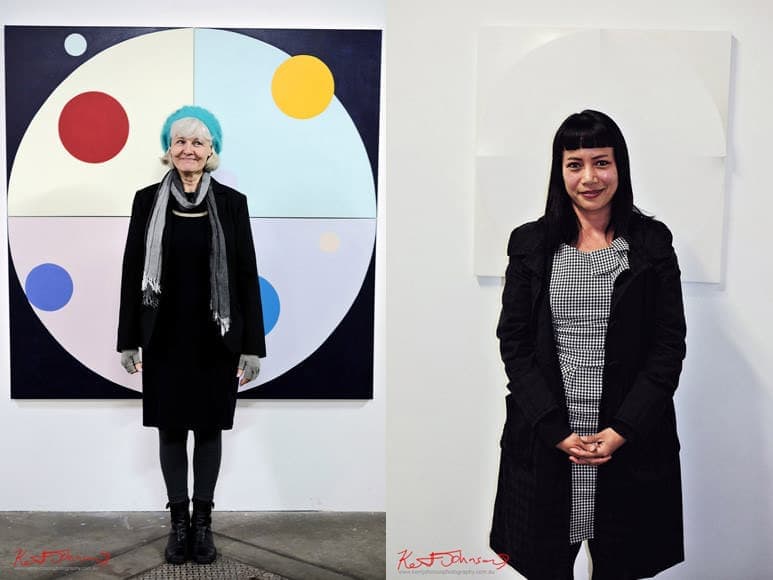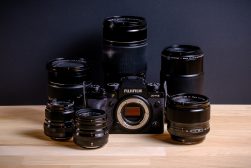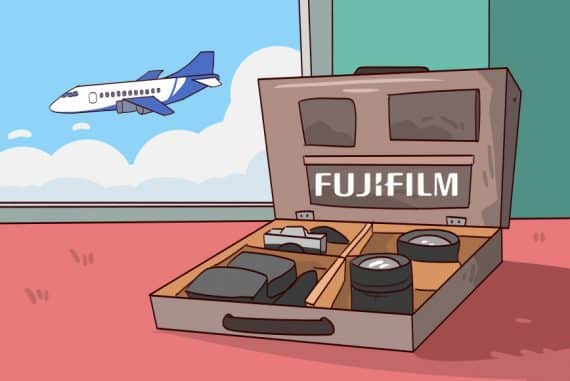





Kent Johnson
Commercial, Fashion, Portrait, Street | Last Updated: April 4, 2024
A simple Ricoh KR5, manual everything 35mm SLR was the camera that got me hooked on photography. Even with staff discount at Myer; it was nearly three weeks pay! I photographed all the things new enthusiasts do with their first camera; local landmarks, city lights, poorly composed sunsets, friends.
Fortunately most of those friends were art students, and their input along with the Ricoh were milestone change agents in my life. I soon upgraded to a Nikon FM, went to art school to develop my skills; swapped the Ricoh & its lenses for a Nikkormat FTN, and learnt early on that you never want to change lens systems unless you really have too – ever.
I’m Kent Johnson, and I am a fashion and people/portrait photographer living in Sydney Australia, and good Gemini that I am I have not one but two Shotkits to share with you. My professional photographic journey on this crazy roller coaster ride of a creative trip began by marrying together my love of creativity, fashion and beautiful pictures.
These days my first love of fashion and people has morphed away from commercial photography into a blog on street fashion and art, artist portraits, because seeing these people I wanted to photograph them and show those photographs too. My blog Street Fashion Sydney resulted in a wholly new lightweight camera kit purposed for just that.
So I now have two distinct photography kits. My never-get-rid-of-anything-you-use commercial and fashion photography kit, and my take everywhere-everyday photography Fujifilm X-Pro1 kit.
Commercial/Fashion Kit
Back in the day I shot 35mm with my Nikon FM, back-up was the Nikkormat FTN and 6×6 with a Hasselblad 500C/M; and since those cameras, the best camera I have used and the camera that has come closest to what I loved ‘mechanically-filmicly-creatively’ about photography is the Nikon D810.
The Nikon D810 camera is just amazing, superb image files, great viewfinder, you can see what you are doing and photographing, just like with the old Nikon FM. The factory focus screen works for manual focus even with this guy’s eyes and the auto focus actually works too; bang on, just like my eyes work on a good day or better (until the Fuji, AF never worked consistently with digital cameras).
What would I change? Swap the easy to knock multi-function command dials and have dedicated shutter, ISO knobs; and this would be hands down the best camera ever! Really.
The Nikon D80 was my first DSLR and I stayed with Nikon because I read I could use the old lenses (see above) – but you could not, at least in a practical-professional photography sense, and that remained the case for quite some time.
The Nikon D300 I eventually fitted with a KatzEye split focusing screen, and went back to manual focus full time with the AF and manual lenses. The Nikon D300 is a great camera. I still use it quite happily and I am constantly amazed at the quality of image file that can be squeezed out of the Nikon NEF RAW file using the Nikon NX-2 software. Amazing!
The Nikon NX-2 software made by NIK (NIK was bought by Google. They also make Snapseed) and single RAW file were much easier to work with than the new Nikon D810 RAW file + carriage file and NX-D. Talk about going backward…a back-up nightmare…
Most of my early fashion work on film was predominately shot with three lenses the E- series Nikon 50mm f/1.8 circa 1983, the Nikon 85mm f/1.8 & Nikon 135mm f/3.5 circa 1968 lenses and I still love them on my digital Nikons. The ’68’ lenses deliver a different looking digital file and have a feeling the newer lenses don’t have; all these lenses take a 52mm thread filter, which saves bag space and money! Because they did not work on the Nikon D80 I set about upgrading the kit with new AF versions, Nikon 50mm f/1.8D, and Nikon 85mm f/1.8D lenses, lovely prime lenses, (pity AF didn’t really work well until very recently).
I then made what I thought would be a compromise, the Nikon 80-200mm f/2.8 AF-D NIKKOR ED zoom which I bought to do a night fashion shoot. This lens has turned out to be one of the best lenses I have ever owned and is my day-to-day go-to fashion lens. Wonderful contrast, great lens coating for studio use, sharp wide open and up to about f10.
Other lenses
NIKKOR 105mm f/2.5 AI-s, one of the most scary sharp lenses I have ever used, this one was owned by my friend, Master Photographer Gilbert Rossi who I shared a studio with a few years back. The story is he tested 8 of these lenses and picked the best, and this is it.
The Sigma 50mm f/1.4 EX DG HSM is a beautiful lens when it’s in focus, always a struggle on the Nikon D300, seems flawless on the Nikon D810! Does not get out of the bag much as it’s really more of a 45mm and you do notice.
The Sigma 12-24mm f/4.5-5.6 EX DG HSM is great for shooting interiors and architectural work in general and for quirky portraits. There is an early 1980s Sigma 28mm macro f/2.8 which along with the Nikon E- Series 35mm f/2.5 were my walk around/street lenses on the FM.
Nikon AF-NIKKOR 24mm f/2.8 D, great lens at events and sometimes for fashion on the Nikon D300. Nikon PK-11 & Nikon PK-12 extension tubes. The Nikon PK-11 is for head shots. There is a generic bellows unit somewhere.
Flash, Filters, Shades, Meter, Memory
Nikon
SB-600 Speedlights x 2. I used to have a Metz CT-45 off camera monster back in the 80s but I disliked the light source so much I eventually sold it so I couldn’t use it. When I saw what people were doing with their toy-like tilt-head on-camera flashes for digital cameras I decided maybe it was time to give them a go. A very handy light source when used responsibly!
ARREN 880 PLUS; I bought this 3 heads and pack kit at an auction. It’s a versatile, lovely light. The whole kit fits in a ‘box’ and I just trolley it about with my camera bag on top. I also use gels, Lee and Rosco, coloured gels, various diffusion and correction gels; always in the studio lighting kit.
Sekonic Dualmaster L-558 flash and ambient light meter with spot function. Essential shooting film in the studio, still very useful and this model shows the blend of ambient and flash. I am trying to use it more on location, always safer than getting carried away with the camera’s meter and what’s on the screen on the back of the camera, even with an histogram.
HAMA hotshoe sync for using the flash kit with Nikon D80 or Canon G10. Kodak Gray Card and colour separation strips.
Bulldog clips and clamps, clothes line pegs for lights and pinning clothing – do fashion samples ever fit? Blu-Tack, because you never know. Leatherman Wave, because you will need to fix, force, cut something.
Canvas backgrounds; I have 2 black (I painted myself) and 2 natural, I love them. Reflector, silver/white; I should get a gold one too.
Velbon Sherpa 450 Tripod, even if it’s not used it’s there, it’s light, does most jobs and I love the dual action pan-tilt head, it’s like a ball head with a handle.
Manfrotto light stands and others, and I prefer a decent boom in the studio for the main light.
Eclipse sensor cleaning kit & Lens Tissue, Giottos blower. During my assisting days I was told the story of the over zealous assistant who cleaned Arthur Elgort’s lenses without asking first, he wasn’t asked back. But digital is a different world, sensors need cleaning and so do lenses, something I nearly never did when I shot on film.
Filters
I have polarising filters for the 52mm mount, a few B&W effects filters I might use as a colour filter these days + Cokin correction filters, 81A, 81B, an orange one for effect and a Neutral Density. I have left a selection in the holder to get dusty and then use – digital has too much information anyway. I always use a lens hood, it protects the front lens from accidents and helps with contrast and saturation.
Datacolor4 Spyder for calibration. Sandisk memory cards. Lowepro Compact AW camera bag. I love this bag. It has everything I need. I particularity like the front pocket arrangement with the clip-out bag for holding memory cards; NEVER unclipped! Bag NEVER unwatched. “Touch wood” but I have actually heard of photographers having their bags stolen on the job!
Assistant (not photographed) Should be watching the photographer and the bag, not the model. Real ones are getting harder and harder to find; “everyone’s a photographer” these days right from the start; or so the photographer/assistant tells me.
Gaffa Tape, more effective than some assistants (did I really say that!!!).
So that’s the main kit for fashion/portrait/commercial and I do choose from all those lenses depending on what I want to achieve on a given shoot; or perhaps the mood of the day. And why not? Photography is a creative art.
Fujifilm – Street Fashion Sydney kit
I really do see this as a second kit, and the Fujfilm X-Pro1 is a whole different camera, a whole different world and way of working; and in many ways the Fuji is the best camera I have ever used. It has certainly allowed me, in a digital photography age to look at the world with an analogue photographers eyes again. No more pushing the (focus) rectangle around the viewfinder instead of composing the shot – and hoping like hell it will actually be in focus. The Fuji does auto focus and does it well!
And if you can’t tell already I love this camera, the first I have loved in a long long time; the Fuji and I, we have a real relationship. I am however a sponsored Fujifilm shooter as Street Fashion Sydney (SFS) was sponsored by Fujifilm Australia back in 2012, and I reviewed the Fujfilm X-Pro1 camera back then along with my first impressions on SFS here. Probably worth a read if you have stuck with my Shotkit post this far.
Body
Fujfilm X-Pro1. I love this body, love the sensor & files, love the 3 viewer options, Optical + Electronic Viewfinder and LCD on back. I use all three! I LOVE that the focus points which are scalable for fine to general detail cover almost all of the screen, corner to corner, top to bottom, and work.
So whenever I pick up a Nikon and choose autofocus, I miss those extra focus point positions because no Nikon has focus points in all the the spots where a fashion and portrait photographer needs them most. (I know one day I will learn to put the action in the dead centre the frame. Nikon, are you listening?)
Lenses
Fujinon XF18mm f/2 R: My day-to-day work horse, mainly because a lot of the spaces I am in don’t give me a lot of room to step back. But a lovely lens, just don’t tilt it with detail at the corners and all will be well. I suspect the Fujinon 23mm f/1.4 R is the perfect SFS lens, one day I will buy one. (Even in large studios I am often back to the wall – I love a longer lens almost always.)
Fujinon XF35mm f/1.4 R: This is my preferred day-to-day lens if I can get back far enough for a shot; vastly superior to many many lenses including the Fujinon XF18mm f/2 R: Adds a great look an feel to the image files.
Fujinon XF60mm f/2.4 R: For portraits and macro! Nice fashion lens too though a little slow on the focusing for fast-fashion. Maybe better IQ than the Fujinon XF35mm f/1.4 R.
Fujinon XF55-200mm f/3.5-4.8: I actually bought this lens myself during a $200 cash back promotion which makes it the best $500 I have ever spent! I bought it to extend the fashion capabilities of the Fujfilm X-Pro1 and this lens has not disappointed, it may actually be too sharp. That’s OK, there’s a slider for that..
Fujifilm EF-X20 TTL Auto Flash: This baby has auto and manual, it took me about 3 months to get into using it and then I wouldn’t take it off! Yes it is tricky to use and I am not convinced it does not have some functionality issues, but then it may be me. I love it. Life saver, style maker, great piece of equipment when used responsibly like all on-camera flash systems. I wrote up a days shooting Newton Festival with this flash unit here.
Fujifilm LC-XPro1 Leather Case for X-Pro1
Canon G10: Portability! The camera that proved a real work horse for SFS until I went over to Fuji. I am still using the little Canon, though not for SFS. Great camera in its day, if not quite perfect and a little old now, still good in the man bag, beach bag, looking forward to a Canon G16 sometime. Or maybe something Fuji.
Accessories
Belkin mirco usb to female USB cable & small Dick Smith SD card reader to allow cards to uploaded to phone or tablet, quite handy. Hama hotshoe & flash sync cable for using flash off-camera. Fast Sony/Sandisk SD memory cards. The Fuji needs fast cards.
A pen for writing things down. Hoya 52 & 62mm polarising filters. Photo business cards to hand out. Crumpler 7 Million Dollar camera bag. Spare batteries.
Samsung Galaxy Tab 3 (SM-T310) fits in the camera bag, screen can be calibrated with the Datacolor4 Spyder. Great for processing shots on with Snapseed and VSCO for Instagram. Nice to show portfolio on – if only I could do settle on an edit. Playing chess online, I love this device!
HTC One. Makes calls, great phone, connects to the internet (life saver). I have learnt to use the camera! Good for editing pictures for Instagram on but not as good as the tablet! Cannot be calibrated, colours are souped-up. My partner just got the latest M8 version, its bigger!
Finally, thanks for reading, and a big thank you Mark for having me on Shotkit, it’s quite an honour being here.
www.streetfashionsydney.blogspot.com.au
www.kentjohnsonphotography.com.au

Check out these 8 essential tools to help you succeed as a professional photographer.
Includes limited-time discounts.












